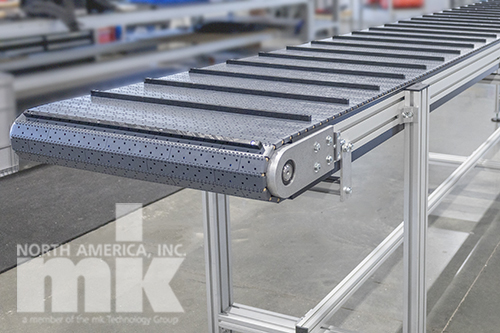The Basics of Belt Conveyors for the Manufacturing Industry
Posted on

The manufacturing industry is one of the largest users of belt conveyors. These conveyor systems are essential for moving raw materials, parts, and finished products through the production process. In this blog post, we will cover the basics of belt conveyors and their benefits for the manufacturing industry.
Advantages of Belt Conveyors in Manufacturing
Belt conveyors have become an essential component of modern manufacturing processes due to their numerous benefits, including:
- Efficiency: Belt conveyors are highly efficient in moving items and materials from one point to another. They can handle a high volume of goods with minimal downtime, making them ideal for busy manufacturing facilities.
- Cost-effective: Belt conveyors can move a large amount of material with minimal energy consumption, making them a cost-effective option for businesses.
- Flexibility: Belt conveyors can be designed to handle a wide range of materials, sizes, and weights, making them a flexible option for various manufacturing processes.
- Safety: Belt conveyors are designed with safety in mind, with features such as emergency stop buttons and guards.
Components of Belt Conveyors
While different conveyor systems may have unique components, most belt conveyors used in manufacturing follow a similar design with essential components, including:
- Belt: The belt is the most crucial component of the conveyor system. It is usually made of rubber, fabric, or metal and is responsible for moving items and materials over the pulleys.
- Pulleys: Pulleys are the wheels or drums around which the belt rotates. They are designed to provide the tension and traction necessary to keep the belt moving.
- Support Rollers: Support roller or idlers provide support for the belt, along the underside of the conveyor and help to maintain its alignment. They also prevent belt sag, which can be detrimental to the conveyor's functionality.
- Motor: The motor provides the power to drive the conveyor system. It is typically an electric motor that drives the pulleys through a gearbox or a direct drive system.
- Controls: Controls enable the conveyor system to start, stop, and control the speed of the conveyor system. They can be manual or automated, depending on the requirements of the application. They can also be as simple or complex as the application requires.
Types of Belt Conveyors in Manufacturing
There are various types of belt conveyors that are used in modern manufacturing facilities, including:
- Flat Belt Conveyors: These belt conveyors have a flat, continuous belt that moves items horizontally or at a slight incline. Flat belt conveyors are most commonly used in manufacturing and distribution facilities.
- Modular Belt Conveyors: Modular belt conveyors (or modular plastic belt conveyors) are similar to flat belt conveyors, but they are designed with interlocking slats or modules that can be replaced individually. These conveyors are also positively driven, which means they can be configured in sizes a traditional belt conveyor may not be.
- Incline Belt Conveyors: Incline belt conveyors are designed to transport items up or down an incline. They are often used in warehouses and production facilities where space is limited.
- Curve Belt Conveyors: Curve belt conveyors are designed to move product around a corner (typically 90° or 180°) while maintaining the leading edge of the product. These conveyors are true corner units and do not require a straight running infeed or outfeed section.
Wrapping Up "The Basics of Belt Conveyors for the Manufacturing Industry"
Belt conveyors are an essential component of modern manufacturing processes. They provide an efficient and cost-effective way to transport items and materials throughout the production process. Understanding the components, types, and benefits of belt conveyors can help businesses choose the right conveyor system for their manufacturing needs.
If you need help determining if a Belt Conveyor is the right conveyor for your application, then check out mk's "Conveyor Comparison Tool". Input your most important manufacturing material handling parameters and the system will tell you which mk conveyor is the belt fit for your application.
Have a question? Then complete the form below and we'll get right back to you.
Important: BISSC was purchased by The BEAG Group, making the BISSC standard no longer applicable.
